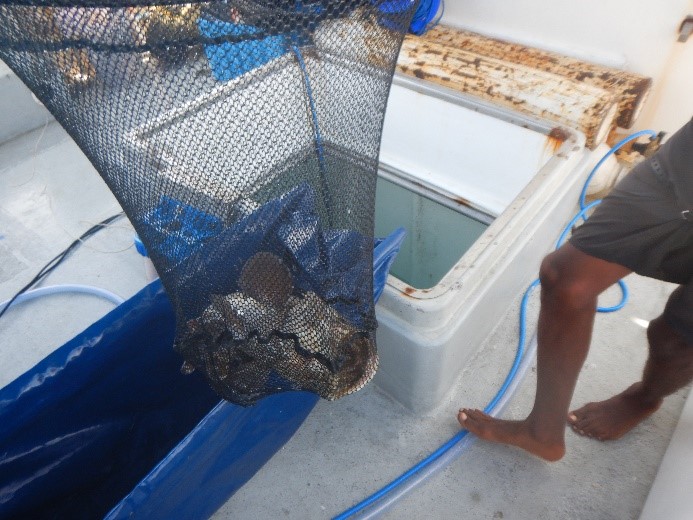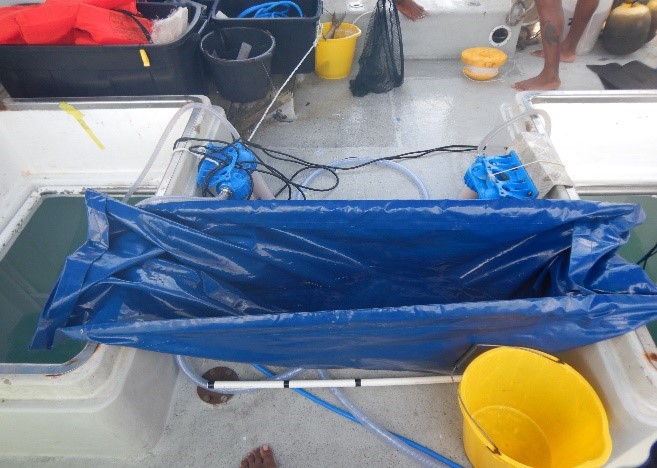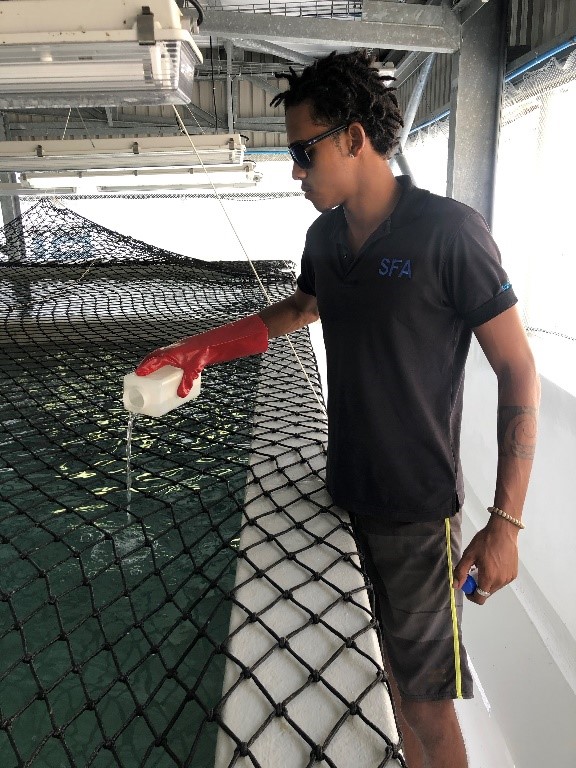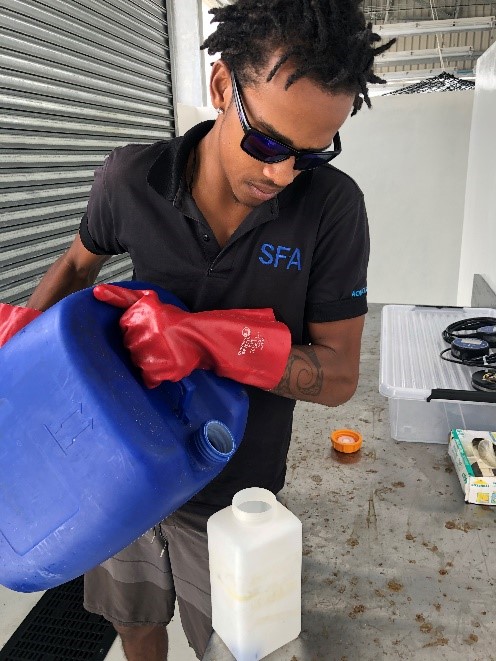When the first batch of broodstock (snappers mainly) were collected in the inner islands, the main task was to keep the fish alive and in optimal condition throughout the fishing trip. Different methods were used but the ones proven to be most effective were to not touch the fish at all and using barbless fishing hooks, of course this also came with its own challenges. Figuring out how to transport the fish from the boat to the live fish holding tanks was next on the agenda. Eventually the idea of building stretchers made of water-resistant material started to take form. Sticks and wooden poles were crafted as handles, that way the fish were able to be carried with just enough water to withstand the confining trip.


Once the fish had been transferred to the live fish holding tanks at the BAQF, the team had to continuously monitor and help them acclimatise to their new living conditions. Our team had almost no experience in broodstock collections and management and thus mistakes were made at the beginning, but as we mastered the skills it all became less complicated. At the beginning some of the fish caught succumbed to infections due to those beginners’ mistake which thus required mild treatment and quarantine interventions. Once this was done positive effects started to emerge and since then we have had several broodstock collection trips including one from the outer islands where we collected mature brown marble grouper.

In the course of setting up and positioning the sea cages, everything that could go wrong, went wrong. Things got hectic and miscalculations materialised within minutes. Ideas were brainstormed and the situation was assessed over and over again. Ultimately the decision to start over and improve communication therefore meant the task at hand was no longer a trouble. Installation of sea cages was a first for Seychelles and such a momentous event for the team.
We were able to get hands-on guidance and training by an experienced Norwegian specialist along with other team members who had some experience with sea cage operations. At present, we have two sea cages (16m diameter) which are monitored on a regular basis by the team.

